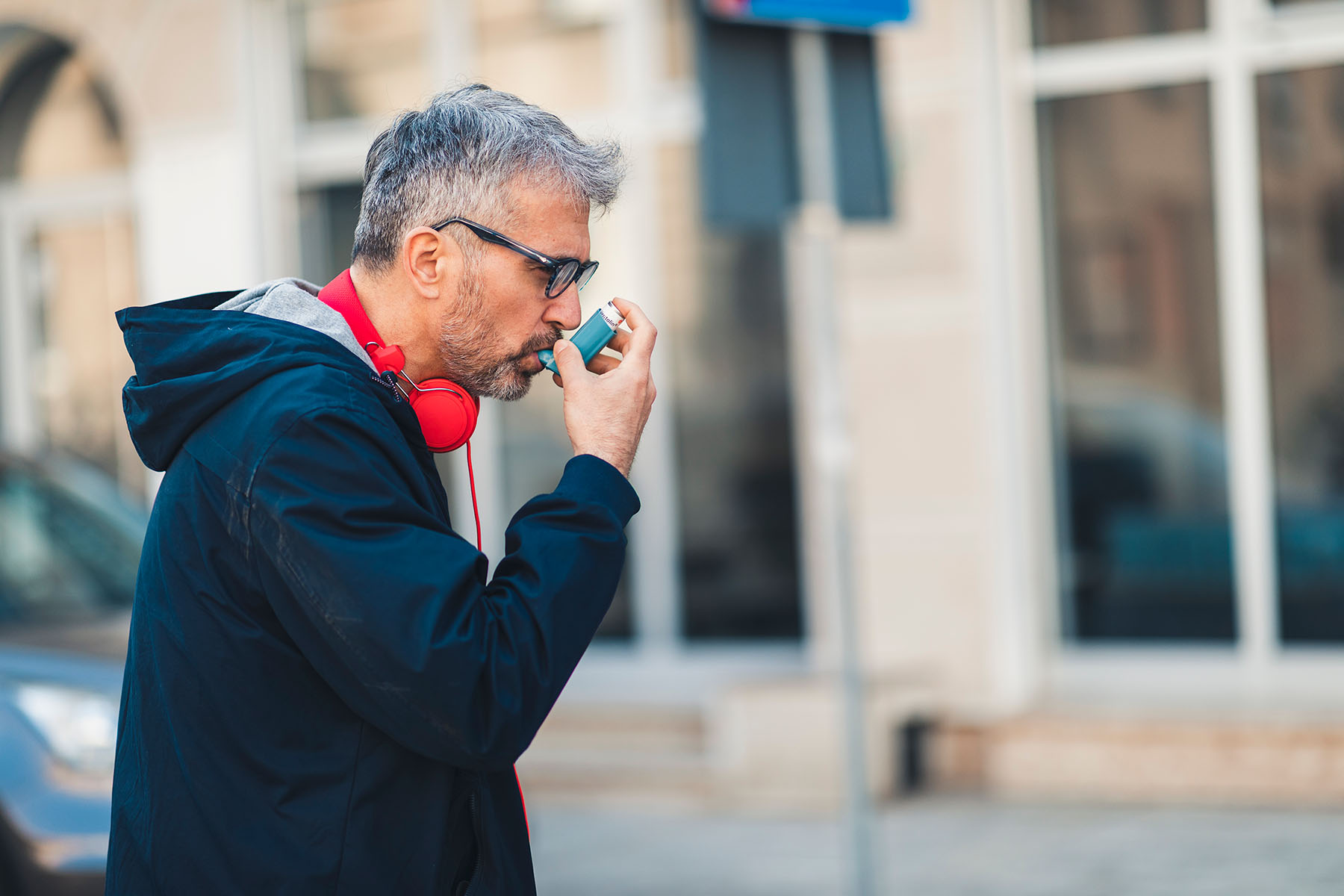COPD Slowing You Down? Try this.

Chronic obstructive pulmonary disease (COPD) worsens lung function over time.
Sometimes, dangerous flare-ups happen, and shortness of breath worsens quickly.
Living with COPD can make it hard to breathe normally during simple daily activities. While this condition is chronic, certain exercises can actually help slow the progression of your COPD and reduce flare-ups and symptoms.
What can breathing exercises do for COPD?
Breathing exercises are one way to help manage COPD flare-ups and symptoms by:
- strengthening your respiratory muscles, including the diaphragm
- increasing your respiratory strength, endurance, and functional capacity
- advancing your capacity for exercise and daily physical activity
- improving your breathing pattern; slowing your respiratory rate
- improving inspiratory capacity
- reducing shortness of breath with activity
- controlling your panic or anxiety
Together, these benefits can make daily life easier and more comfortable.
With COPD, your body’s tolerance to exercise is affected by the severity of your disease and other underlying health conditions or comorbidities.
With exercise, these conditions can potentially worsen or become unstable and, in some cases, increase shortness of breath. Some exercises or intensity of exertion may not be safe to do without professional monitoring.
“Start with an interdisciplinary team assessment to appropriately customize your individualized exercise plan,” says Jessica Firmeza, DPN, APRN-BC, CCRP, who is a member of the University of Miami Health System’s Pulmonary Rehabilitation program.
“Your pulmonologist, a pulmonary rehab healthcare provider, or physical therapist can assess your inspiratory (breathing in) muscle strength, breathing pattern, and the severity of your disease to determine if inspiratory and expiratory (breathing out) muscle training is appropriate for you,” says Sabine Gempel, PT, DPT, a board-certified cardiovascular and pulmonary specialist with the University of Miami Miller School of Medicine.
Your health care provider will monitor your response to various exercise intensities to prescribe a safe target intensity. You’ll learn self-monitoring and safe parameters, such as the BORG scale (which measures exertion and shortness of breath), oxygen saturation, and blood pressure response, to ensure your exercise program is effective.
In some cases, respiratory therapists recommend that certain exercises be completed with airway-clearance devices. If you are prescribed supplemental oxygen, talk to your providers about how to effectively use and adjust it while exercising.
“You may need titration to keep oxygen saturation above 88% during exercise, with an assessment of dyspnea (shortness of breath) and exertion scales within target goals,” Dr. Firmeza says.
What’s pulmonary rehab?
Your healthcare provider may recommend pulmonary rehab before you begin an at-home exercise program.
“Starting in pulmonary rehab is a great idea so you can be monitored, and the appropriate intensity level can be prescribed,” Dr. Gempel says. “They can have you perform exercises with monitoring to see if it’s well tolerated, provide technique instructions, and set any parameters for safety and effectiveness. Pulmonary rehab also includes a significant amount of education that can improve patient outcomes, including function and quality of life.”
Continue exercises at home for COPD management.
Your home exercise program will reflect what you learn and practice in pulmonary rehab under supervision. With monitoring and feedback from your pulmonary rehab team, you’ll become comfortable performing these exercises safely on your own.
“While in rehabilitation, you’ll learn how to self-monitor and adjust your home exercise program according to how you feel,” Dr. Firmeza says. “After completing the program, you continue/maintain the same or lower exercise intensity or workload at home.”
Your personalized plan may include traditional whole-body cardiovascular, flexibility, endurance, and strength-training exercises, including:
- treadmill walking
- stationary biking
- latex resistance bands
- body-weight resistance exercises
- free weights
- sit-to-stand
- marching in place
- balance exercises
- Tai chi
- yoga
- airway clearance techniques
- breathing techniques
- respiratory muscle strengthening
Breathing exercises for COPD management include:
- Paced breathing (exhale when exerting effort)
- Pursed-lip breathing (breath out like you’re blowing bubbles)
- Controlled coughing
- Diaphragmatic breathing techniques
- Inspiratory and expiratory muscle training with a device or with simple household items such as drinking straws
Breathe easier and live better.
“While there is no lung-strengthening exercise that can reverse or improve COPD, there are health-related behaviors that can improve your symptoms and quality of life,” Dr. Firmeza says.
The goal is for you to stay committed to your exercise plan during and after pulmonary rehab, manage your underlying health conditions, and make better lifestyle choices. This includes not smoking and avoiding secondhand smoke, getting enough quality sleep, reducing anxiety, and maintaining a normal weight with a heart-healthy diet and exercise.
Dr. Firmeza adds, “take your medications regularly, stay hydrated, incorporate paced-breathing exercises in every activity, use breathing devices, and practice energy conservation during activities of daily living.”
Ready for your pulmonary rehab assessment?
UHealth’s Pulmonary Clinic for COPD and Asthma can diagnose and assess your COPD to determine if you qualify for pulmonary rehabilitation. In addition to the latest diagnostic tools and treatment approaches, UHealth’s expert pulmonary team is studying medicine safety and effectiveness for COPD to advance patient care and improve outcomes. With ongoing research and clinical trials, you’ll get the most innovative COPD care sooner.
Call 305-689-5635 or request an appointment online.
Dana Kantrowitz is a contributing writer for UHealth’s news service.
Tags: chronic lung disease, cigarette smoke, develop copd, exercise capacity, Jessica Firmeza, respiratory infections, Sabine Gempel
